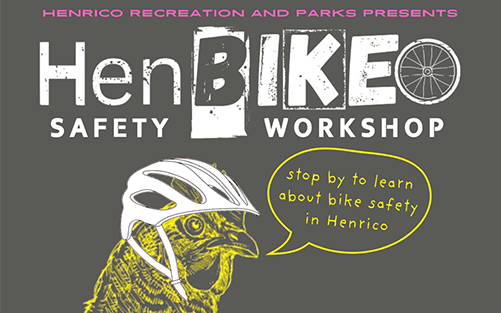Weapons Scanners, Henbiko, and Traffic Signal Priority Systems
Cheers RVA!
Today we’ll see more clouds with scattered showers and thunderstorms likely developing in the afternoon, with a high of 77 and a low of 61.
the juice:
The Chesterfield County School Board voted unanimously to install weapons scanners at all middle and high schools, via WTVR.
The decision comes after successful pilot programs at Robious Middle School and Meadowbrook High School.
Richmond and Henrico Public Schools already have similar technology, with 31% of schools in Virginia utilizing weapons detectors.
the pulp:
Graham Moomaw from the Richmonder breaks down the key takeaways from the city budget, noting power bills and other fees will increase.
The People’s Budget has released the detailed results of the voting, with a breakdown of exactly how many votes each proposal received in each district. The 7th district (East End) received the most total votes with 860 votes recorded, with most other districts recording about 600 votes. However the 8th and 9th districts recorded 222 and 155 votes, respectively.
Henrico is hosting a ‘Henbiko Safety Workshop’ tonight at Libbie Mill library to educate the community about cycling safety and to showcase upcoming bike lanes and pedestrian infrastructure improvements in the Libbie Mill area.

the dive:
John Barclay from What’s Next Richmond does a deep dive on what makes the GRTC city bus so slow.
Barclay focused on the #14 line, a major arterial route that connects the Northside with downtown, with connections to VCU and VUU as well.
He notes cars are likely a quicker means of travel because of the use of the interstate, but upon further analysis found that time spent at stopped traffic lights was the key difference maker.
An end-to-end trip along the route in a car took about 29 minutes, as compared to 54 minutes in a bus.

Barclay writes:
Notice that though the bus is slower in each of the three categories, the most dramatic difference is the extra 13:53 the bus spent waiting at traffic signals. This isn’t to say that the bus spent more time at any given traffic signal, but rather that the bus was stopped by more traffic signals. Of the 51 signals (by my count) that exist along the 14’s route, the bus had to stop at 26 of them whereas the car was only stopped by 15 total lights.
The primary reason for this difference is signal timing. Traffic signals are generally set up to optimize the number of consecutive green lights a vehicle can experience along the route. This pattern is ideal for cars trying to pass through the City quickly, but is less ideal for buses.
However, Richmond will soon have a network of 100 traffic signals as part of a ‘traffic signal priority’ system that is used in places such as Alexandria.
TSP systems are able to decrease transit times by holding green lights for buses and reducing red light length when a bus is stopped.
The Pulse currently uses a TSP system, but only in the capacity of maintaining on-time performance.
Read the full article here.
the vibe:
A city bus from 1958: Get more out of life, go out to a movie, go by bus!

Have a dauntless day RVA!
Thanks for reading. If you enjoy this newsletter, tell a friend, or donate.